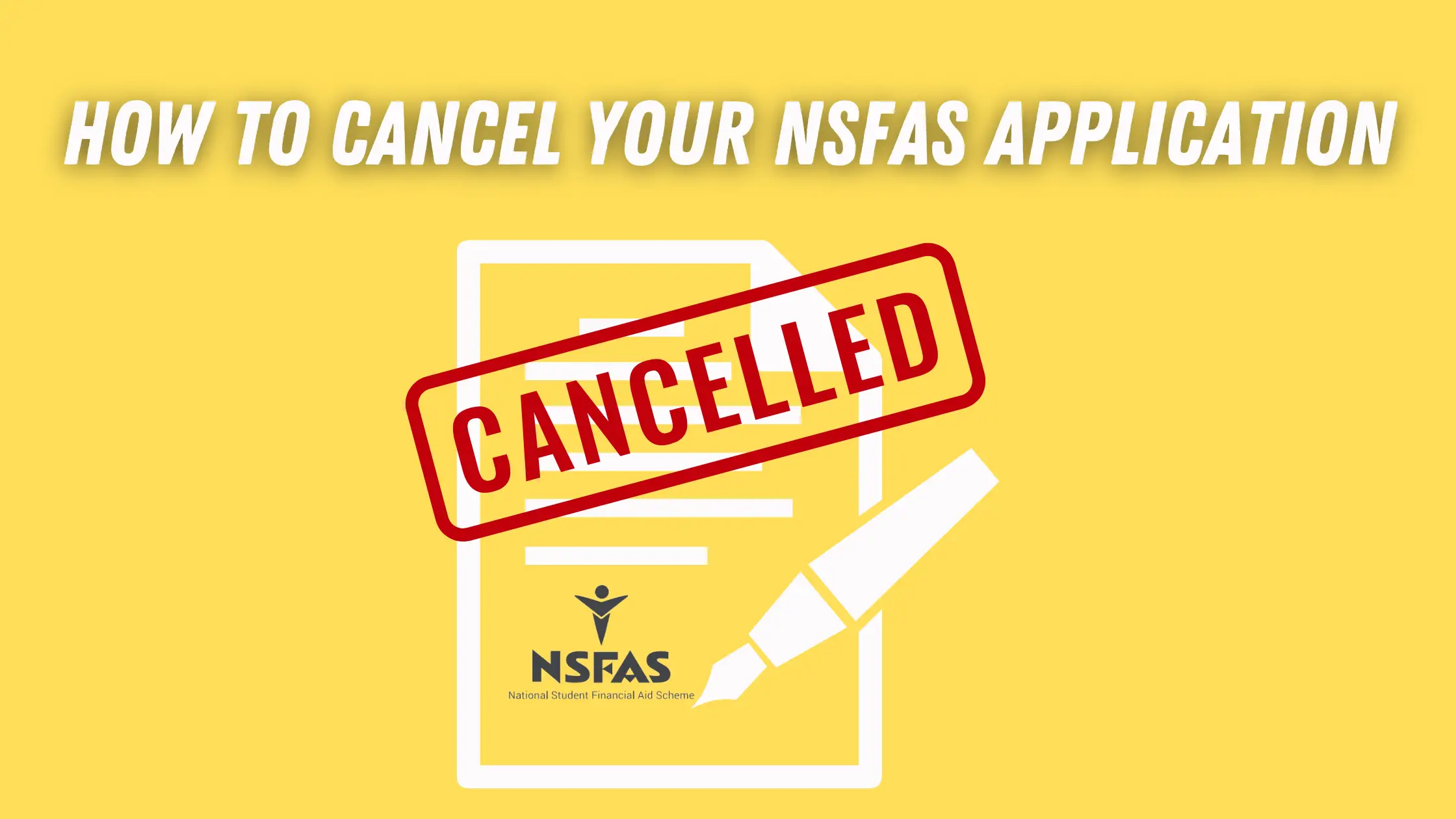Many students find themselves in situations where they need to discontinue their affiliation with the National Student Financial Aid Scheme (NSFAS), but feel unsure of how and where to begin.
As a general public member seeking to increase your knowledge on cancelling a NSFAS application, this guide provides you with an in-depth understanding of the NSFAS policies, instructions on drafting and sending a cancellation request, and guidance on effectively following up with NSFAS to ensure your request has been acknowledged and is underway.
NSFAS Policies
The National Student Financial Aid Scheme, commonly referred to as NSFAS, operates under specific guidelines that every applicant should understand. NSFAS is a South African initiative designed to help students who lack the necessary financial means to fund their education. Like any other financial aid institution, NSFAS has rules and regulations outlining their application process, eligibility, approval, and crucially, how to cancel your application.
NSFAS Application Cancellation
If for any reason at all, you decide to withdraw your NSFAS application, it is essential that you follow the correct steps to ensure a seamless process. NSFAS doesn’t exactly have an option for cancelling an application via their online site, the main way of applying for the financial aid. However, you can explore other ways, as described below, which will effectively lead to your application being cancelled.
Get in Touch with NSFAS Directly
Your best bet on how to cancel your NSFAS application is by contacting the institution directly. This can be achieved through:
- Phone Call: Call them on their toll-free customer service line. Be prepared to provide your ID number and other relevant personal details.
- Email: Email NSFAS using the email address provided on their website. Make clear in your email that you wish to cancel your application. NSFAS typically responds within 72 hours, but it may take longer during high-volume periods.
- Physical Letter: Write a letter stating your intentions and mail it directly to their offices. This option may be less convenient and time-consuming, but it’s a sure way of reaching the institution.
Communicate with Your Institution
In some cases, you may find it useful to inform the financial aid office at your educational institution about your decision to cancel your NSFAS application. While they don’t have direct power over your NSFAS application, they can provide support by verifying your cancellation with NSFAS, especially if they endorsed your initial application.
Maintain a Clear Record
One important note: regardless of whether you are cancelling your application via phone, email, or letter, always keep a record of your cancellation. If you’re communicating electronically, save a copy of the email or fax you sent. If you’re making a phone call, note the date, time and the name of the person you spoke to just in case you need it for future reference. Similarly, if you drop off a physical letter, have a copy of the letter and ensure it is date-stamped by the receiving authority.
In the end, understanding how to cancel your NSFAS application necessitates an understanding of the institution’s policies. While the NSFAS does not make it clearly evident on how to cancel an application, reaching out directly or through your educational institution remains the most effective way. Remember to keep clear records of any cancellation claims for future reference.
NSFAS Cancellation Letter
Step 1 – Prepare Your Reasoning
To cancel your NSFAS application, you’ll need a legitimate reason. This could be a change in your financial situation, obtaining alternative funding, or deciding to decline the educational opportunity. Make sure you can clearly and concisely express this reason.
Step 2 – Cancel Application Online
Start drafting a formal letter or an email. Begin with your full name, address, contact information, and the date. Next, write the formal address of the NSFAS organization. Make sure to include a clear subject such as “Request for NSFAS Application Cancellation” to the letter or email for swift processing.
Step 3 – State Your Request Clearly
In the first paragraph, immediately state your request to cancel your NSFAS application. There’s no need for any build-up or unnecessary information. Get straight to the point for the sake of clarity. It might be as straightforward as, “I am writing to formally request the cancellation of my NSFAS application.”
Step 4 – Provide Your Details
Next, provide your details. This should include any information that’s linked with your NSFAS application. Typical information includes your full name, date of birth, application number, etc. Providing this detail helps NSFAS locate your file easily.
Step 5 – Provide Your Reason
Explain the reasons behind your application cancellation in the next paragraph. Ensure it is clear, truthful, and accurately puts across your situation.
Step 6 – Sign Your Letter
With email, a simple typed name is enough. For a letter, an inked signature is ideal. This step serves to authenticate your request and displays your consent.
Step 7 – Send to Customer Service
If you’re using email, send your cancellation request to NSFAS’s customer services email address. If you are physically mailing your letter, ensure it’s addressed to the correct department, and have proof of postage just in case any issues arise and you need to track or confirm delivery.
Step 8 – Follow Up
After sending your letter or email, give it a week or so then follow-up. This will show NSFAS that you are earnest about your cancellation request. You can do this via phone or an email to NSFAS’s customer services.
Written Cancellation Requests
Step 1: Contacting NSFAS
To begin the process of cancelling your NSFAS application, you need to establish initial contact with NSFAS. This can be through either a phone call or an email. Make sure to have your application number or other relevant details available. State clearly that you want to cancel the application during this initial contact.
Step 2: Written Request
Next, you should follow up your verbal request with a written one. This can be an email or a letter. Include specifics like your name, application number, and a thorough explanation of your intent to cancel. It is important to keep copies of all your communication.
Step 3: Confirmation of Receipt
Once your written request has been sent, follow-up with NSFAS to confirm that they’ve received it. This can be done through email or a phone call. Be persistent and patient, because it may take several attempts before receiving a confirmation.
Step 4: Monitor the Progress
As you wait for the cancellation to take place, it’s crucial to keep checking in with NSFAS. Repeated communication helps to ensure that your request is being actioned and creates a formal record of your efforts.
Step 5: Receipt of Cancellation
Once your application has been successfully cancelled, NSFAS should provide you with confirmation detailing this. Either through a call, an email, or a letter. Be sure to keep this confirmation in a safe place, should you ever need to refer back to it.
Following these steps will help you to navigate the cancellation process of your NSFAS application effectively and ensure your request has been properly lodged and attended to. Regular follow-ups and keeping a record of all communication will solidify your claim.
Conclusion
The process of cancelling a NSFAS application does not have to be complicated or overwhelming. A proper grasp of the NSFAS policies, along with a clear and articulate cancellation request, paired with persistent follow-ups can lead to a smooth cancellation process. Remember to keep calm and patient throughout this process, while ensuring that all interactions with NSFAS representatives are respectful and professional. Empower yourself with the knowledge contained in this guide and make your NSFAS application cancellation process a breeze.


